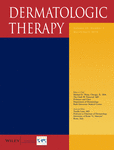Factors contributing to the treatment duration of diphenylcyclopropenone immunotherapy for periungual warts
Conflicts of interest: None
ABSTRACT
Diphenylcyclopropenone (DPCP) immunotherapy has been shown to be efficacious for the treatment of warts, especially periungual warts for which destructive techniques are limited. However, factors affecting the duration of treatment of periungual warts have not been studied. A total of 61 patients with periungual warts who were completely cured with DPCP immunotherapy were included in this study. Age, sex, disease duration, location (fingernail, toenail, or both), number of warts, diameter of the largest wart, application number for sensitization and two types of sensitization reactions, erythema and blister index (EBI), and pruritus index were evaluated. Multiple linear regression analysis was performed to find correlations of these variables with the treatment duration. Of the nine variables, application number for sensitization (regression coefficient = 3.251 and 2.428, respectively) and EBI (regression coefficient = −9.950 and −9.694, respectively) were independent factors significantly affecting both the total duration of treatment and the duration of treatment after sensitization (p < 0.05, respectively). The sample size was limited. A shorter sensitization period and more severe EBI of the sensitization reaction contribute to a shorter time required for a complete cure in the treatment of periungual warts with DPCP immunotherapy.




